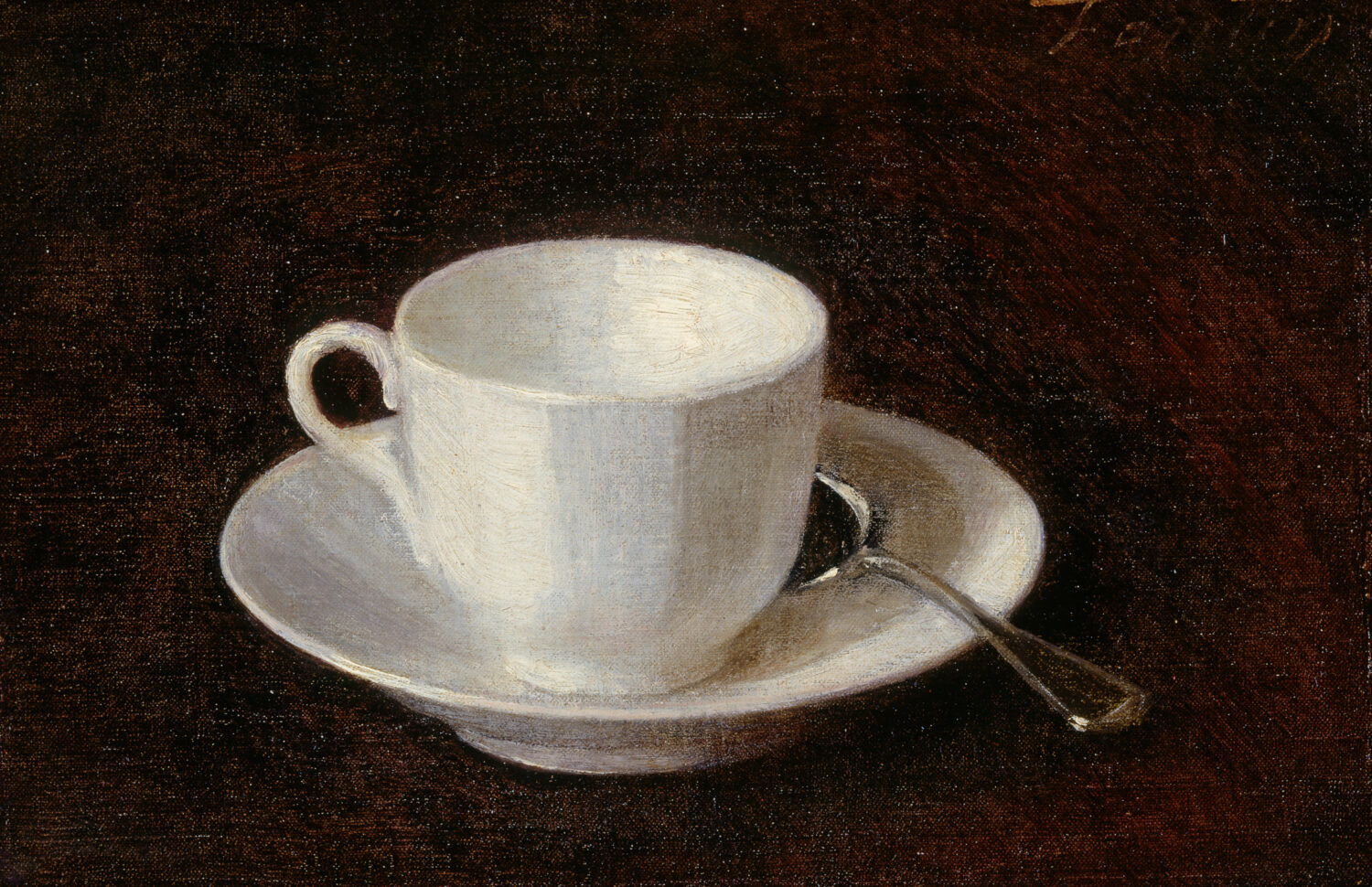Look and Think activities should take 5 -10 minutes.
Do activities might take longer depending on the task and how creative you are feeling!
White Cup and Saucer, Henri Fantin-Latour (1836-1904), 1864
Oil on Canvas, 19.4 x 28.9 cm, no.1016
Look
Look closely at this cup. Why do you think Fantin-Latour chose this cup rather than another?
Do you have a favourite cup or object? What makes it special?
Think
What can you imagine drinking from this cup, and what would you eat with it?
Would you share it with someone? What conversations can you imagine hearing in the room while you eat and drink?
Do
Transform an everyday object into an artwork like Fantin-Latour.
Follow the suggestions below on how to repeat, rotate, and overlap your artwork to make them more abstract. You could use photography, collage, drawing or even paint.

Collect your resources together. You can use anything! We used: A pencil, paper, pens, scissors, glue and collage materials.
- Draw your chosen everyday object. We chose a tea cup, but it could be a pen, peg or even your pencil it is up to you.
- Make a template of your drawing on paper to make it easier to repeat it in different materials and multiple times.
- Create multiple copies of your everyday object.
- Play with where you want things to be. How does your object look in different colours, from different angles, repeated or even rotated.
- When you are happy with your artwork stick them down to some paper or card.

This painting was selected by the Director of The Fitzwilliam Museum, Luke Syson, as a stimulus for The Great Big Art Exhibition hosted by Firstsite Gallery in 2021. Luke explains his choice below.
‘A white cup and saucer. What could be more ordinary? And a big part of the appeal of this picture is its simplicity. There are almost no extras to distract us. But it’s also a picture that speaks largely and complicatedly. Fantin-Latour implies that someone might pick up the teaspoon any minute. The cup and saucer are very slightly askew. So there’s an implied story here – one that we can invent. And somehow too the painter has made this the ultimate cup, the essence of what a cup and saucer should be. In the last months, the things we have around us at home have become more important. How might we depict them to celebrate their ordinariness and convey their new significance in our lives?’
Henri Fantin-Latour (see a self-portrait of him here in our collection) was a French artist best known for his flower paintings and group portraits of artists and writers in Paris. As a youth, he received drawing lessons from his father, who was also an artist, and in 1854 he went to study at the School of Fine Art (École des Beaux-Arts) in Paris. While there he spent most of his time copying the works of the Old Masters in the Louvre. It was here he met his wife and fellow painter, Victoria Dubourg (1840–1926).
Fantin-Latour befriended several young artists who would later be associated with Impressionism (learn more here), including James Abbott McNeill Whistler (1834–1903) and Édouard Manet (1832–83). However Fantin-Latour’s own work remained more traditional in style and he preferred to stick to detailed studies of people, flowers or objects like this one.
Download this Look Think Do as a PDF or a Word document.